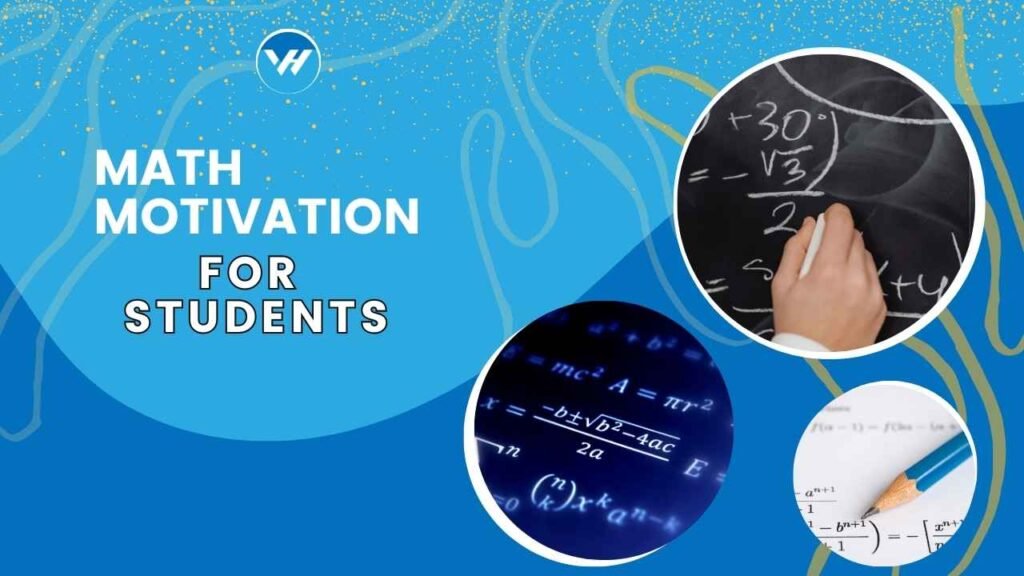Motivating students in mathematics is one of the most crucial and challenging aspects of education. A well-motivated student is more likely to engage deeply with the material, leading to better understanding and retention. But how do we ignite that spark? Let’s delve into the world of intrinsic and extrinsic motivation to uncover strategies that can make math exciting for students.

Table of Contents
ToggleUnderstanding Motivation in Math
Intrinsic Motivation
Intrinsic motivation stems from within the student. It’s the inner desire to learn and understand a subject, driven by curiosity and personal satisfaction. For example, a student might enjoy solving puzzles simply for the thrill of finding the solution.
Extrinsic Motivation
Extrinsic motivation, on the other hand, involves external rewards. These can range from praise and good grades to more tangible rewards like prizes or privileges. While it’s powerful, relying solely on extrinsic motivators can sometimes undermine the intrinsic joy of learning.
Techniques for Motivating Students in Mathematics
Highlight Knowledge Gaps
One effective way to motivate students is by revealing gaps in their understanding. When students realize there’s something they don’t know, it can drive their desire to learn more. For instance, presenting a few simple problems followed by more complex ones can highlight these gaps.
Show Sequential Achievements
Understanding how concepts build on one another can be incredibly motivating. For example, showing how learning basic algebra is essential for understanding calculus later on helps students see the bigger picture and the importance of each step in their learning journey.
Discover Patterns
Encouraging students to discover patterns can be highly engaging. An example could be the sequence in adding numbers from 1 to 100. Instead of doing it sequentially, students can pair numbers (1 + 100, 2 + 99, etc.) to quickly find the sum.
Present Challenges
Challenging students intellectually can spark enthusiasm. However, it’s crucial to select challenges that are within their reach. Problems should be designed to lead into the lesson, not distract from it.
Showcase “Gee Whiz” Results
Mathematics is full of counterintuitive results that can amaze and motivate students. For example, discussing the famous birthday problem (which shows the surprisingly high probability of shared birthdays in small groups) can leave students in awe and eager to learn more.
Indicate Practical Usefulness
Showing the practical applications of math can make lessons more relevant and engaging. For example, explaining how geometry helps in designing buildings can help students see the value in what they are learning.
Incorporate Recreational Math
Using puzzles, games, and paradoxes can make learning math fun. These activities should be brief and simple to ensure they enhance rather than detract from the main lesson.
Tell Pertinent Stories
Stories about historical figures or events in mathematics can be very motivating. For instance, the story of how Carl Friedrich Gauss added the numbers from 1 to 100 in a minute as a child can inspire students.
Active Involvement in Justifying Curiosities
Encouraging students to justify mathematical curiosities, like why numbers divisible by 9 have digits that sum to a multiple of 9, can be very engaging. This method promotes deep thinking and understanding.
Practical Strategies for Teachers
Interactive Lessons
Engaging students with hands-on activities, such as experiments and projects, can make learning more dynamic and interesting.
Use of Technology
Incorporating educational apps and online tools can enhance learning. Tools like Virtual Help can connect students with tutors for personalized assistance.
Regular Feedback and Encouragement
Providing regular positive feedback can boost students’ confidence and motivation. Encouragement helps students feel valued and capable.
Peer Learning
Group work and discussions can facilitate peer learning, making the process more collaborative and less intimidating.
Personalized Learning Paths
Tailoring lessons to individual student needs can ensure that each student remains engaged and challenged at their level.
Role of Parents in Math Motivation
Parents play a crucial role in fostering a positive attitude towards math. Encouraging curiosity, providing support, and helping with resources can significantly impact a child’s motivation and success in math.
Virtual Help: Enhancing Math Motivation
Virtual Help is a powerful tool for enhancing math motivation. This app connects students with experienced tutors who can provide personalized assistance. Whether it’s homework help or understanding complex concepts, Virtual Help makes learning more accessible and engaging.
How Virtual Help Works
Virtual Help is available on iOS and Android, offering a platform where students can find tutors and get assignment help. The app’s user-friendly interface makes it easy to connect with the right tutor for your needs.
Benefits of Using Virtual Help
Using Virtual Help can provide several benefits:
- Personalized Assistance: Tutors tailor their teaching methods to individual student needs.
- Convenience: Access help anytime, anywhere.
- Improved Understanding: One-on-one sessions can lead to a deeper understanding of the material.
- Increased Motivation: Personalized support can boost confidence and motivation.
Conclusion
Motivating students in mathematics requires a blend of strategies that cater to both intrinsic and extrinsic motivations. By highlighting knowledge gaps, presenting challenges, and showing the real-world applications of math, teachers can ignite a passion for learning in their students. Tools like Virtual Help can further enhance this motivation by providing personalized support and making learning more accessible. With the right approach, we can turn math from a daunting subject into an exciting adventure.
FAQs
How can I help my child develop an interest in math?
Encourage curiosity, provide support with resources, and relate math to everyday life to show its relevance and importance.
What are some effective ways to make math fun?
Incorporate games, puzzles, and hands-on activities that make learning interactive and enjoyable.
How does Virtual Help assist with math motivation?
Virtual Help connects students with tutors who provide personalized assistance, making learning more engaging and accessible.
What should I do if my child is struggling with math?
Provide additional resources, seek help from tutors, and encourage a positive attitude towards learning and improvement.
Are there any online resources for additional math practice?
Yes, websites like Khan Academy, Coursera, and educational apps offer great resources for extra math practice.





